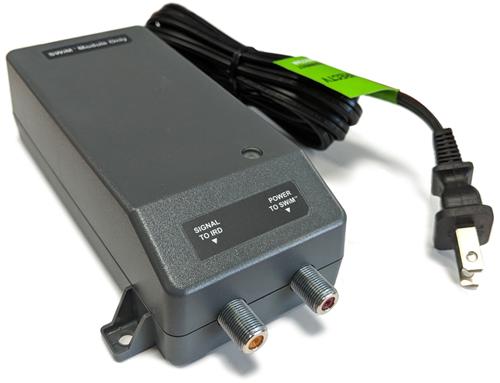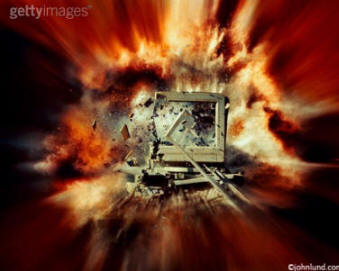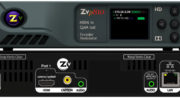DIRECTV SWM systems use a power inserter to make sure there is enough power for all the electronics down the line. Older systems relied on the receivers themselves to power the dish, but SWM equipment does a lot more than a simple dish setup.

DIRECTV specs suggest connecting the power inserter one of three ways.
On SWM-enabled dishes, a single line is run to a splitter. A cable is run from the red connection on the splitter into the “Power to SWM” connection on the power inserter. Then, a cable is run from the “Signal to IRD” connection to your receiver.
With SWM8 or SWiM-16 multiswitches, a cable is run from the SWM1 output into “Power to SWM,” and a cable from “Signal to IRD” runs to your receiver.
First of all, I don’t recommend ever using the “Signal to IRD” port. Not ever. Why?

OK, maybe it’s not that bad.
Still, if you swap the connections on the power inserter, connecting “Power to SWM” to a receiver, that receiver will be dead before you finish screwing in the connector. Dollars to donuts. So don’t take a risk… don’t ever connect a receiver to a power inserter. Get a terminator and cover that “Signal to IRD” port, then forget it ever existed.
There are better ways to connect the power inserter that isolate it completely and limit the risk of any problems. They also give you an extra port on your splitter to compensate for the one you’re not using on the power inserter.
On SWM8 multiswitches, you can run the power inserter to the Legacy 3 port instead. This is a trick from the commercial world and the multiswitches are designed to be used that way.
SWM-16 multiswitches and DSWM30 multiswitches have a separate DC/PWR connector. It works perfectly. I recommend using it instead of going through SWM1 or SWM2.
Remember when running cable from your power inserter you always want solid copper core wires. Look carefully at the tip of the connection, at the inner wire. If you see any silver on it, it’s probably not solid copper. Anything that carries power should be solid copper.
Installing your power inserter this way will make for a more stable system and will help ensure you don’t accidentally “smoke” a receiver.





